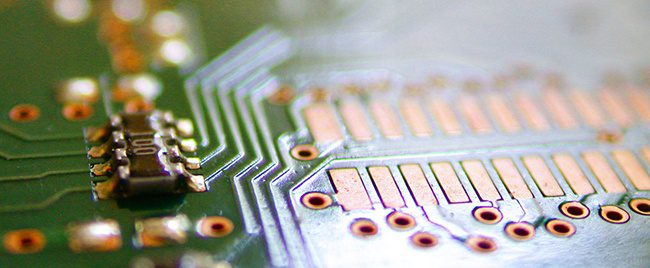Practices to Mitigate the Risk of Counterfeit Electronic Components

Counterfeit electronic components have long been a concern in the electronics manufacturing industry.
The increasing ease of producing them in recent years has made a significant impact. A recent report shows that consumer and industrial businesses lose $250 billion each year due to counterfeit electronic components. The consequences of counterfeit electronics parts are long-ranging and present a serious threat to both companies and consumers.
What Is a Counterfeit Electronic Part?
A counterfeit is defined as a fraudulent part that is a “copy, imitation, or substitute” that has been labeled as genuine without the legal right and intends to defraud or deceive.
There are several reasons why your business might run into issues with counterfeit parts:
- Flaws in the logistic plan. Insufficient inventory for product lifecycle or outdated parts.
- Procurement issues. Choosing cost savings over trusted sourcing, failure to use data for authentication, lack of quality assurance requirements.
- Dumping excess inventory.
- Issues in distribution. Lack of quality assurance or deliberate misrepresentation.
- Issues in testing. Lack of tests or inspections that would reveal counterfeit parts.
- Insufficient law enforcement resources to track down and arrest counterfeiters.
The impact of a counterfeit electronic part can be devastating for a business. Some of the possible consequences include:
Loss of Life or Personal Injury Due to Product Defects
No one wants to think their product could lead to injury or even death. The fact is, this happens. Protecting the consumer from counterfeit parts is paramount to your product functioning as planned.
A personal injury lawsuit can derail a small to mid-sized business, damaging the brand and causing other consumers to lose trust in the company.
Increased Likelihood of Recall or Product Replacement
When your product does not function as intended, you are faced with the issue of correcting the problem. A product recall can lead to bad press and a poor representation of the company, which can have a long-term impact.
Manufacturing Downtime
After the discovery of a counterfeit part, electronic manufacturers may have to halt its manufacturing operations to conduct an investigation and determine its source.
Time spent correcting this problem has major impacts on your company’s productivity.
Not only are you looking at the cost of material in the replacement part, but the time spent investigating the issue, retrieving all the damaged products, repairing the units, and resending them back to customers will cost even more.
Don’t forget the intangible cost of a tarnished company reputation with your loyal customer base.
Potential Penalties and Governmental Regulation
Depending on the product, companies utilizing counterfeit parts may be subject to penalties from the government or other accrediting or regulatory industries.
The penalties and fines that accompany the use of a counterfeit part can be extensive.
How to Reduce Your Risk
Fortunately, there are several ways that a company can reduce its risk of selling a product that contains a counterfeit part. Some of the most compelling include:
- Developing strong procurement policies. Businesses must ensure that their parts come from trusted sources. When researching distributors and dealers, ask them about their quality assurance process and controls for their handling, storage, and shipping.
- Quality control inspection. Visual inspection is a simple yet effective method for controlling counterfeit parts. Electronic manufacturers must keep a complete inventory for parts and information, so it’s easy to ascertain the validity of components. If working with an electronic contract manufacturer, ask them about their quality assurance process.
- Chain of custody. A strong shipping, handling, and storage process will help reduce the risk of counterfeiting. Ask suppliers and distributors how they handle components, both when transported and when in storage. Quality control is essential throughout every step of the process.
- Awareness and detection. Companies should take a proactive approach to quality control assurance. Staying on top of government warnings and reports and collaborating with others in the industry, are effective ways to combat counterfeit parts and fraud.
Preventing use of counterfeit parts is essential for maintaining consumer safety, reducing liability, and protecting your company’s image.
Quality assurance procedures through every step of sourcing, production, and distribution are essential. Mitigating your risk of counterfeit parts is not only good business sense, it’s vital to the health of your future business.
At Levison Enterprises, we hold ourselves to the highest quality standards and know exactly where our materials are sourced from.
Contact us today to learn more about our sourcing methods and how we can help you on your next project.